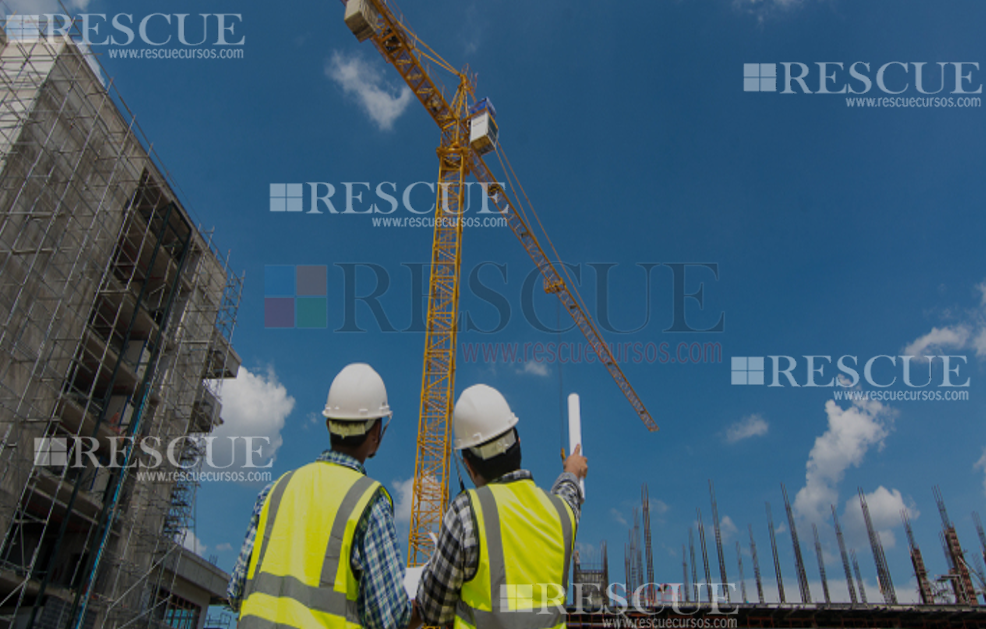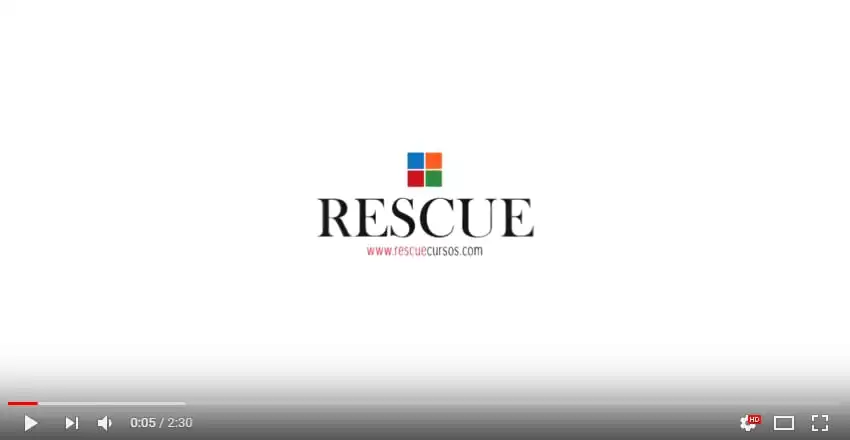NR 18 Training - Admission and Periodical in English

Treinamento NR 18 – Admissional e Periódico em Inglês
Nome Técnico: Admission Training for Civil Construction Work in English - eSocial Requirement Code: 1809
Referência: 55621
NR 18 Training – Admission and Periodical in English
The Admission and Periodic Course for workers in the field of civil construction aims to instruct the employees who join the company and reinforce the workers already present, regarding the safety methods in the activities and preventive measures against the risks arising from the task, avoiding, therefore, the occurrence of accidents.
Regulatory Standard NR-18, Item 18.28 – Training:
“18.28.1 All employees must receive admission and periodic training, aiming to guarantee the safe execution of their activities.
[…] 18.28.3 The periodic training must be given: a) whenever it becomes necessary; b) at the beginning of each phase of the work. 18.28.4 In training, workers must receive copies of the procedures and operations to be carried out safely. ”
Penalty Values in case of non-existence or serious failure *
(* Values for companies with 26 to 50 employees)
To check.
Escolha Seu Plano
100% Presencial
16 Horas - Com Experiência
Nossa Sede ou In Company DDD 11
Outros Locais Consultar
Por Pessoa/Turma (PagSeguro)
Semipresencial/Reciclagem
08hs EAD / 08hs Presenciais
Nossa Sede ou In Company DDD 11
Outros Locais Consultar
Por Pessoa/Turma (PagSeguro)
EAD (Ensino a Distância)
16 Horas - Com Experiência
Totalmente Online
Imperdível!
Por Pessoa/Turma (PagSeguro)
Preços Especiais
para Empresas/Turmas
Conteúdo Programático
NR 18 Training – Admission and Periodical in English
Working conditions and environment;
Application field;
Sectors in the field of civil construction;
Risks inherent to its function;
Safety with machinery;
Scaffolding and Work Platforms;
Safety for work at height;
Protection measures against falls from a height;
Confined Places;
Entry and work permit;
Demolition;
Excavations, Foundations and Dismantling of Rocks;
Carpentry;
Steel frames;
Concrete Structures;
Metallic structures;
PPE and EPCs suitable for the task;
Program of Conditions and Working Environment in the Construction Industry – PCMAT;
Living Areas;
Welding and Hot Cutting Operations;
Handling and Transport of Materials and People;
Steel cables and synthetic fiber cables;
Masonry, Coatings and Finishes;
Floating Services;
Electrical Installations;
Order and Cleanliness;
Sidings and Galleries;
Storage and Storage of Materials;
Transport of Workers in Motor Vehicles;
Fire Protection;
Safety Signs;
Emergency response procedures;
Rescue notions;
Complements for Machines and Equipment when applicable:
Awareness of Importance:
Machine or Equipment Operation Instruction Manual;
Inspection and Maintenance Plan for the Machine or Equipment according to NR 12;
Technical Report with ART of the Machine or Equipment according to NR 12;
END (Non-Destructive Testing) according to NR 12;
Electrical Tests NR 10;
Activity Complements:
Awareness of Importance:
PRA (Preliminary Risk Analysis);
EAP (Emergency Action Plan;
RMP (Risk Management Plan);
Understanding the need for the Rescue Team;
The importance of knowledge of the task;
Prevention of accidents and notions of first aid;
Fire protection;
Perception of risks and factors that affect people’s perceptions;
Impact and behavioral factors on safety;
Fear factor;
How to discover the fastest and easiest way to develop Skills;
How to control the mind while working;
How to manage working time;
Why balance energy during activity in order to obtain productivity;
Consequences of Risk Habituation;
Causes of accidents at work;
Understanding Tree of Causes;
Understanding Fault Tree;
Understandings on Ergonomics;
Workstation Analysis;
Ergonomic Risks;
Practical Exercises;
Evidence Record;
Theoretical and Practical Evaluation;
Certificate of participation.
Attention: The Course teaches you to apply the normative concepts of the standard. What allows you to sign Projects, Reports, Expertise etc. are the duties that the Legally Qualified Professional has with his Class Council, for example, CREA.
This course aims to study situations where it will be necessary to apply: Concepts and Calculations according to the relevant Standards and does not replace the analysis and responsibility on the part of each professional accredited with CREA or other Class Councils in the most varied situations, where makes it absolutely necessary to respect the conditions of conservation of the equipment, periodic checking of the instruments, as well as the respect of primary capacity pre-determined by the PPE manufacturers, among others based on the corresponding Norms.
Attention:
The Distance Learning Certificate is also known as Online, according to LAW No. 9,394, of DECEMBER 20, 1996. It can be used for: Complementary Activities; Company valuations; Public tenders; University Extension; Extracurricular hours; Improved chances of getting a job; Recruitment processes; Internal promotions; Title Evidence; Doctoral selections; Master’s selections; You get other opportunities. Course 100% EAD (Distance Learning) or Semi-face-to-face needs a Pedagogical Project is only valid for the Employer, if it fully follows SEPRT Ordinance No. 915, of July 30, 2019 – NR 01 – General Provisions of the Special Secretariat of Social Security and Labor. Click Here.
Understand the relationship between Price and Value:
Performing a task as strategic as pricing a Service, requires knowledge of the business world.
Two fundamental concepts to understand how to price are the definitions of: Price and Value.
Value is a qualitative concept, and is linked to the potential for transforming that content.
A course is more valuable when it adds more knowledge to the target audience.
Price is a consequence of value.
Because it is an essentially quantitative concept, it is responsible for “translating” the value into a number.
Therefore, the greater the value added to the content, the higher the fair price.
Carga Horária
Treinamento NR 18 – Admissional e Periódico em Inglês
Participants without experience:
Minimum working load = 40 hours / class
Participants with experience:
Minimum working load = 16 hours/class
Update (Recycle):
Minimum working load = 08 hours/class
Update (Recycle):
NR 10 Item 10.8.8.2 Biennial recycling training shall be conducted and whenever any of the following occur:
a) change of position or change of company;
b) return to work or inactivity for a period exceeding three months;
c) significant modifications in the electrical installations or exchange of methods, processes and work organization.
d) change of company;
e) Exchange of machinery or equipment.
NR 18.14.2.1 Operators must have completed elementary education and must receive qualification and specific training on the equipment, with a minimum workload of sixteen hours and annual update with a minimum workload of four hours.
Certificate: The Certificate will be issued for each participant that achieves the minimum use of 70% (theoretical and practical) as recommended by the Regulatory Standards.
Discretion of Training or Update Certificates:
Our certificates are numbered and issued in accordance with the Regulatory Standards and applicable devices:
Issuance of A.R.T. (Annotation of Technical Responsibility);
Employee’s full name and identity document;
Program content;
Workload; City, place and date of the training;
Name, identification, signature and qualification of the instructor (s);
Name, identification and signature of the technician responsible for the training;
Name and qualification of our Qualified Professional;
Specification of the type of work and list of types of confined spaces;
Space for signing the trainee;
Information on the Certificate that the participants received a DVD containing didactic material (Handout, Videos, Standards, etc.) presented in the training.
Training Evidence: Edited video, photos, digitalized documentation, continuous improvement, instructor’s opinion: Consult values.
Rescue Cursos
Nossos Cursos são completos e dinâmicos

Learn More: NR 18 Training – Admission and Periodical in English:
NR-18 – Item 18.28 Training
18.28.1 All employees must receive admission and periodic training, aiming to guarantee the safe execution of their activities.
18.28.2 Admission training must have a minimum workload of 6 (six) hours, be taught within working hours, before the worker starts his activities, consisting of:
a) information on working conditions and environment;
b) risks inherent to its function;
c) proper use of Personal Protective Equipment – PPE;
d) information about the Collective Protection Equipment – EPC, existing at the construction site.
18.28.3 Periodic training should be given:
a) whenever it becomes necessary;
b) at the beginning of each phase of the work.
18.28.4 In training, workers must receive copies of the procedures and operations to be carried out safely.
[…]
18.37.4 For the purposes of applying this NR, qualified workers are those who prove to the employer and the labor inspection one of the following conditions:
a) training, through a specific course in the official education system;
b) training, through a specialized course taught by training centers and recognized by the official education system.
18.37.5 For the purposes of applying this NR, qualified workers are those who prove to the employer and the labor inspection one of the following conditions:
a) training through training in the company;
b) training through a course taught by private or public institutions, provided that it is conducted by a qualified professional;
c) have proven experience in a Work Card of at least 6 (six) months in the job.
18.37.6 In the case of omission, the provisions contained in the other Regulatory Norms of Ordinance No. 3.214 / 78 and its subsequent amendments apply to the construction industry.
[…]
18.37.7 The construction companies, regularly registered in the CONFEA / CREA System, under the responsibility of an Engineering professional, are permitted in special situations not provided for in this NR, upon compliance with the requirements set out in the following subitems, the adoption of alternative solutions regarding the measures of collective protection, the adoption of work techniques and the use of equipment, technologies and other devices that:
(Amended by SIT Ordinance No. 237, of June 10, 2011)
a) provide technological advances in the safety, hygiene and health of workers;
b) aim to implement control measures and preventive safety systems in the processes, conditions and work environment in the Construction Industry;
c) ensure that tasks and activities are carried out in a safe and healthy manner.
18.37.7.1 The procedures and means of protection adopted must be under the responsibility of a legally qualified Engineer and an Occupational Safety Engineer with the appropriate issue of Technical Responsibility Note – ART.
NR 18 Training – Admission and Periodical in English: Consult us.

